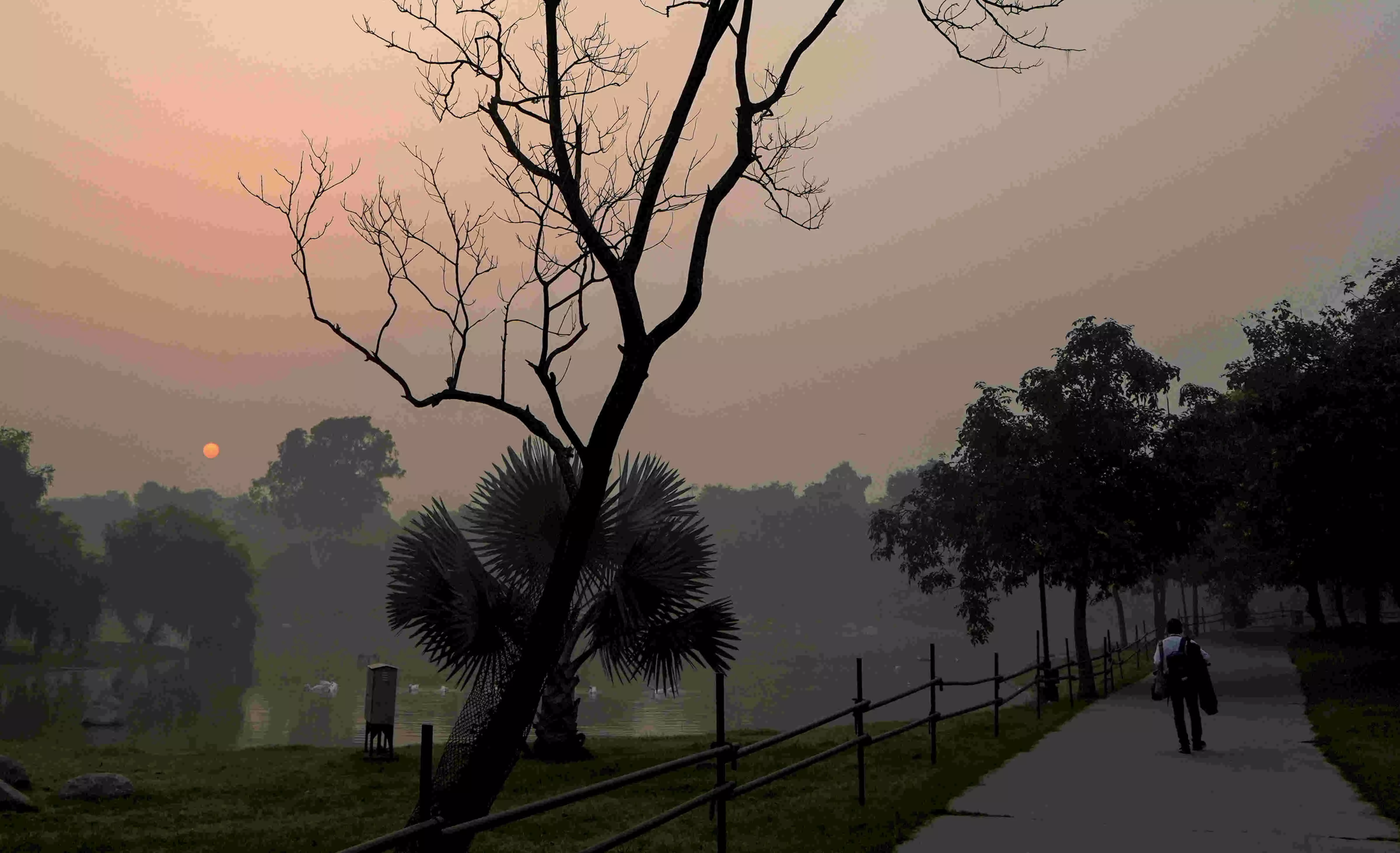Relentless firecracker bursting shrouds Delhi in smog, ranked world's most polluted city post-Diwali

New Delhi: On Friday morning, New Delhi emerged as the world's most polluted city, following a Diwali night marked by a significant spike in pollution levels despite a ban on firecrackers. According to data from Swiss air quality technology company IQAir, the city’s air quality plunged into hazardous territory after the celebrations, with thick smog enveloping the capital.
The air quality index (AQI) at Anand Vihar touched 388 at 10 a.m., labeled as "very poor" by the Central Pollution Control Board (CPCB). Several key areas, including Anand Vihar, entered the “severe” AQI category, with PM2.5 levels soaring to levels dangerous for respiratory health.
Compared to the clearer skies observed last Diwali, when favorable conditions held the AQI at 218, this year’s festivities have once again escalated pollution levels. Experts cite unfavorable weather, vehicular emissions, and stubble burning as contributing factors that, combined with fireworks, intensified the pollution. Enforcement efforts were in place with 377 teams deployed to enforce the cracker ban, but widespread violations were reported across multiple neighborhoods in Delhi’s east and west regions.
On Thursday evening, the AQI spiked to 327 as fireworks lit up the city, pushing PM2.5 and PM10 levels to 145.1 and 272 micrograms per cubic meter, respectively. These fine particles are known to penetrate deep into the lungs, posing severe health risks, particularly for children, the elderly, and those with respiratory issues.
The Delhi government has continued a five-year-long ban on the manufacture, storage, sale, and use of firecrackers. Delhi’s Environment Minister deployed enforcement teams in coordination with local welfare groups and police to curb violations. Legal action, including penalties under the Bharatiya Nyaya Sanhita (BNS), was warned against those flouting the ban, though reports indicated extensive non-compliance across several localities like Jaunapur, Punjabi Bagh, Burari, and East of Kailash.
While pollution levels surged in Delhi, neighboring areas like Noida, Ghaziabad, and Gurugram remained in the “poor” category, with Faridabad faring slightly better with a “moderate” AQI of 181. Yet, as winter approaches, unfavorable weather and emissions from vehicles and stubble burning in neighboring states are expected to further worsen air quality in the Delhi-NCR region. The Delhi Pollution Control Committee (DPCC) anticipates peak pollution in early November, a period marked by a spike in stubble-burning incidents across Punjab and Haryana.
Despite recurring government efforts and public awareness campaigns, Diwali celebrations continue to be a major trigger for air pollution spikes in the capital.



